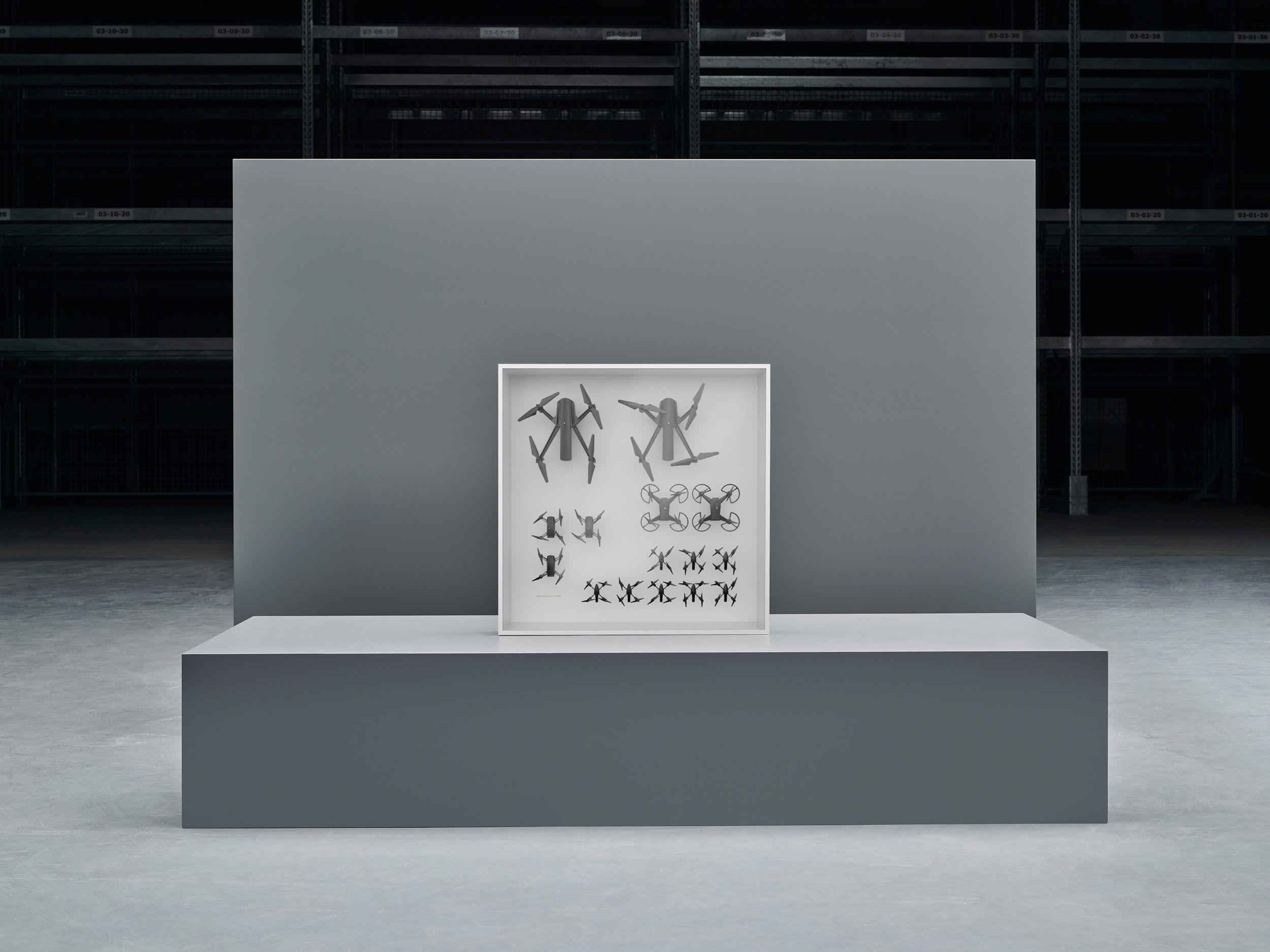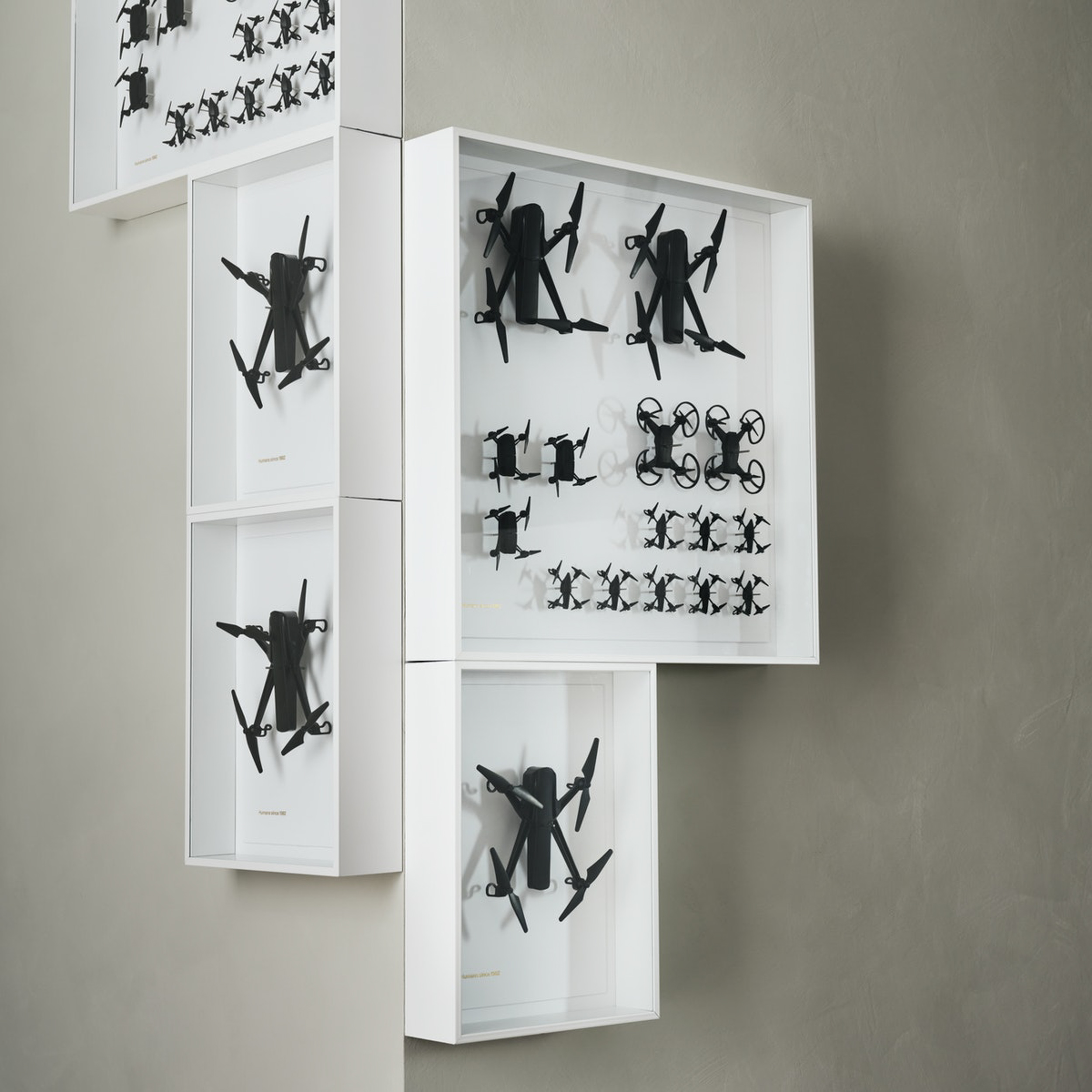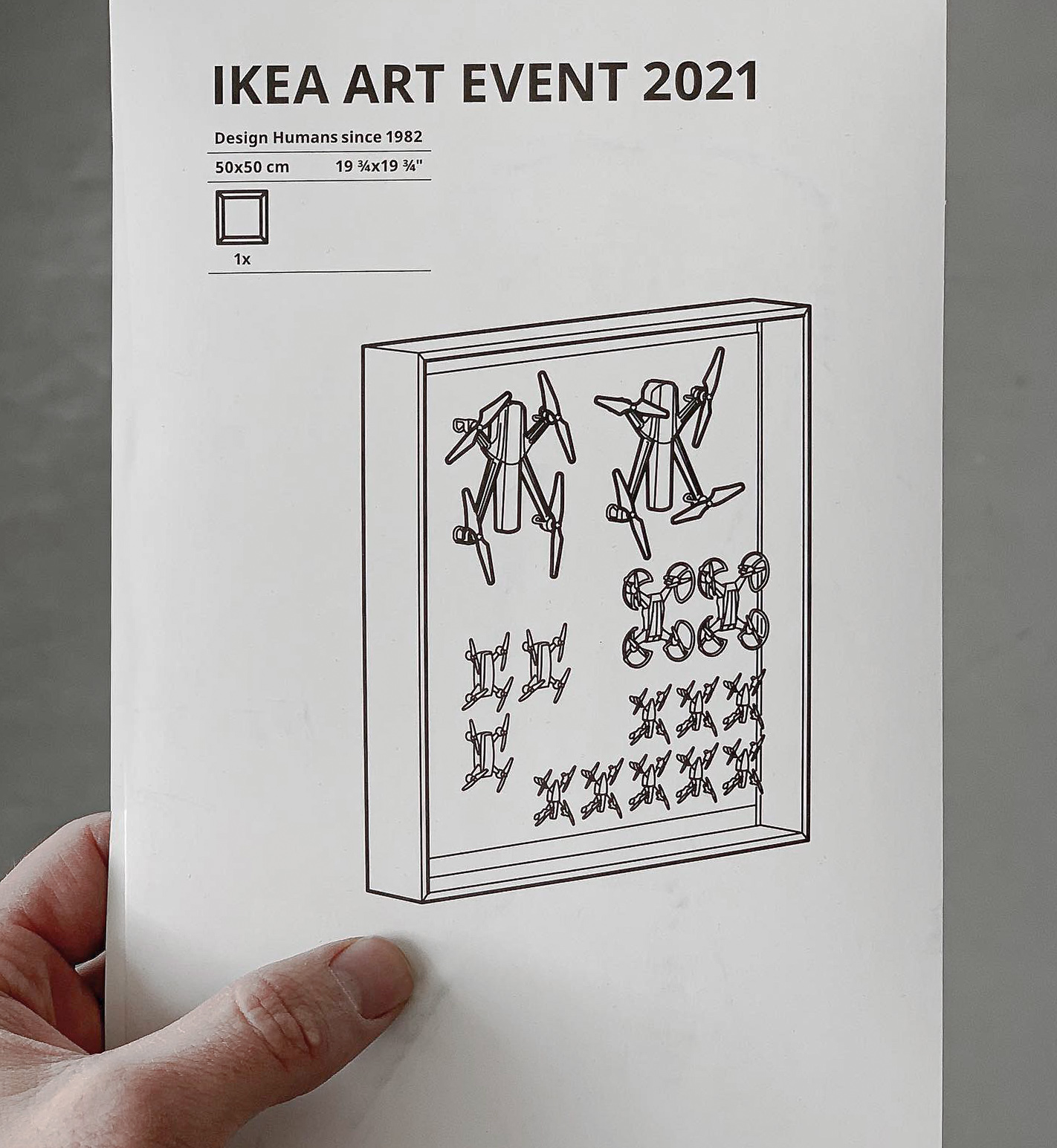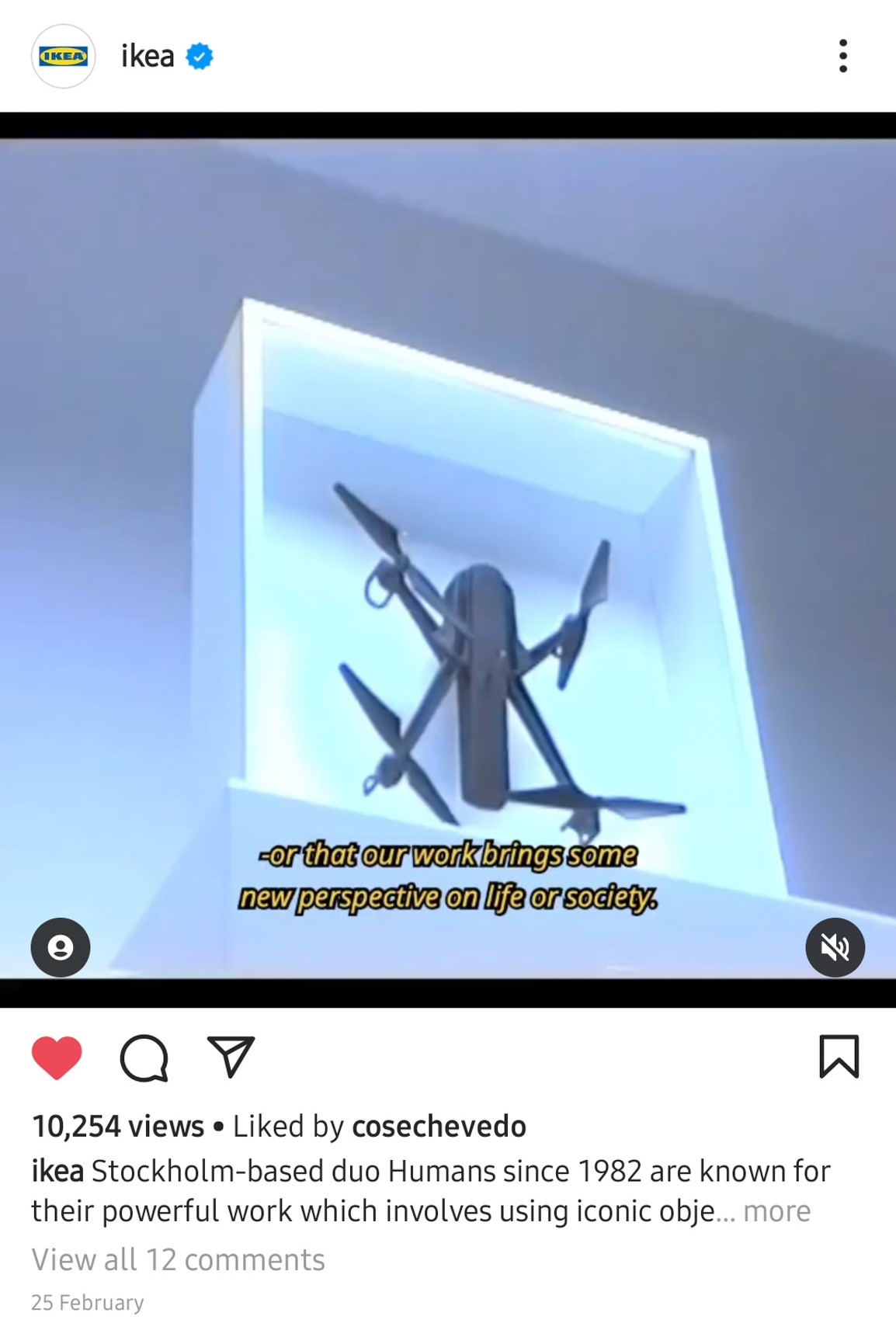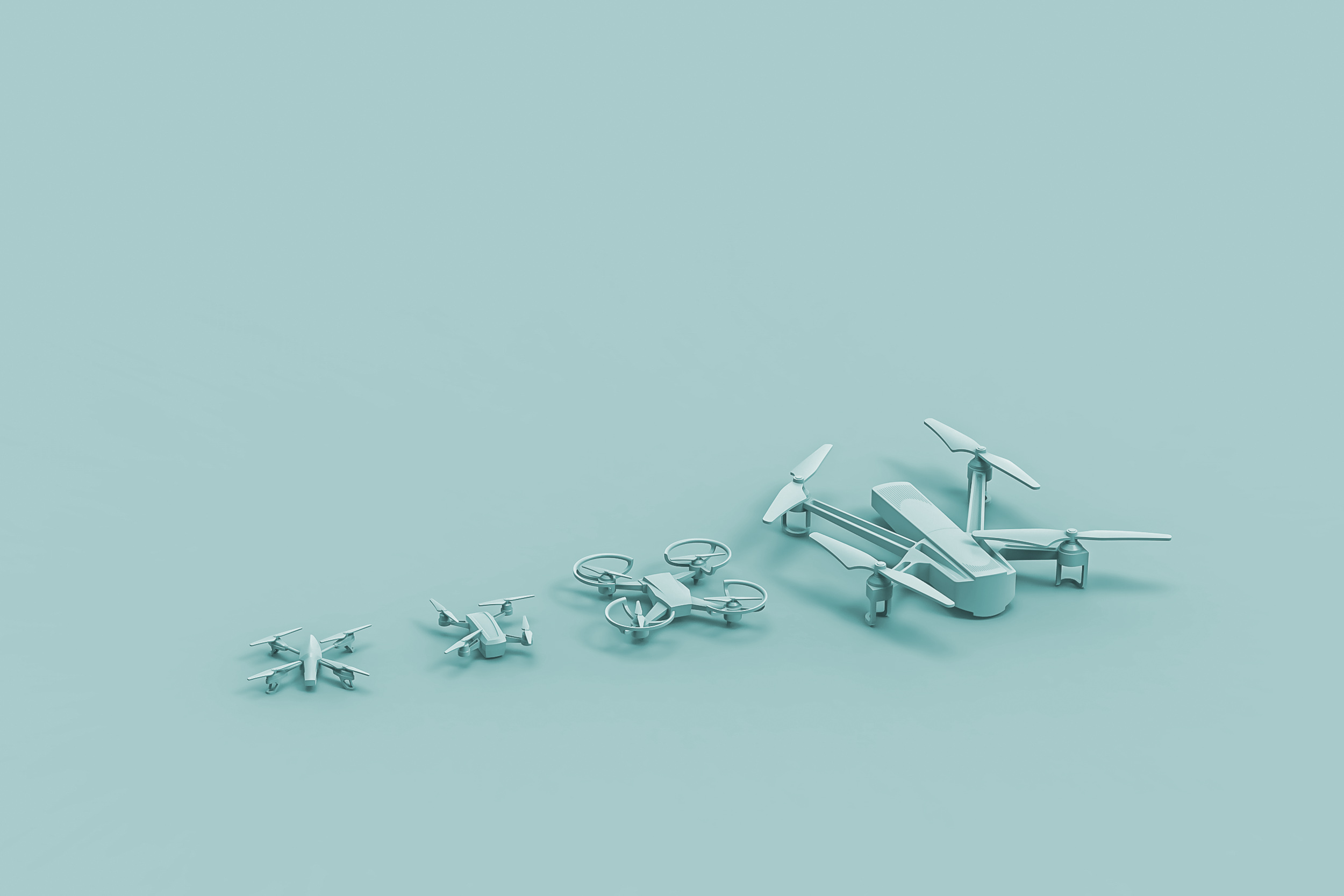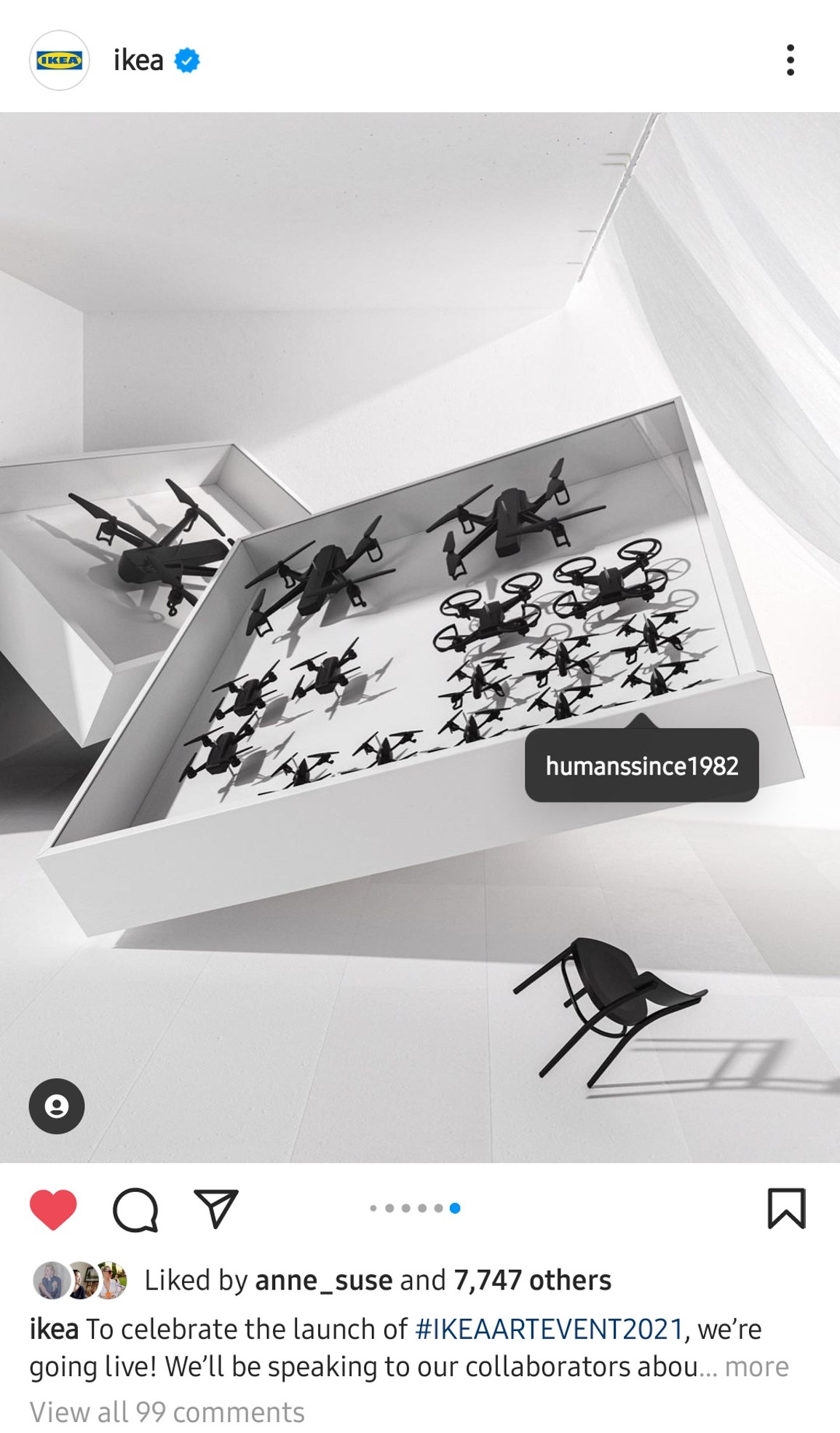ClockClock 9
Commercial
Humans since 1982
Role
Designer (in-house)
Responsibility
Concept development, Product design, Interface design, Visualisation, Packaging design, Prototyping, Graphic design for printed and digital media, Product branding, Art direction for video and photo documentation.
Contribution
User research, Product development, Choreography design, UX design research, UI design, State machine, Supplier sourcing and communications, Quality control.
Details
Black housing of mineral composite, Coated MDF/Aluminium, Custom electronic components, White clock hands of injection moulded ABS, Print media, Coated steel hanging bracket, Power supply, Cotton gloves.
Ø460 x 50mm
More about ClockClock 9 on
humanssince1982.com
clockclock.com
vimeo
ClockClock 9 departs from Humans since 1982’s signature artworks, the A million Times series, and reduces the amount of clock hands to a minimum, whilst at the same time staying true to the concept of its predecessors.
The leading objective for the development of ClockClock 9 was to break new grounds and distill the A million Times concept to its essence in order to cater the concept to a broader clientel. Equally important was to embed ClockClock 9 into Humans since 1982’s existing portfolio: following a pure form language with a premium finish whilst at the same time allowing for production in larger quantities and adaptability for future editions.
Resulting in a radically simplistc and from its predecessors clearly distinguishable product, ClockClock 9 embodies a sophisticated, modular approach and a complete new set of designed clock hands. The circular wall mounted shape forms the backdrop to 9 pairs of clock hands, performing choreographies alternating between abstract and synchronised movement patterns and showing the time like a traditional analogue clock. To further improve the users experience, an App was devloped in order to remotely control the artwork directly from a connected phone.
Photos: Tim Meier, Heinrich Ehnert
The leading objective for the development of ClockClock 9 was to break new grounds and distill the A million Times concept to its essence in order to cater the concept to a broader clientel. Equally important was to embed ClockClock 9 into Humans since 1982’s existing portfolio: following a pure form language with a premium finish whilst at the same time allowing for production in larger quantities and adaptability for future editions.
Resulting in a radically simplistc and from its predecessors clearly distinguishable product, ClockClock 9 embodies a sophisticated, modular approach and a complete new set of designed clock hands. The circular wall mounted shape forms the backdrop to 9 pairs of clock hands, performing choreographies alternating between abstract and synchronised movement patterns and showing the time like a traditional analogue clock. To further improve the users experience, an App was devloped in order to remotely control the artwork directly from a connected phone.
Photos: Tim Meier, Heinrich Ehnert
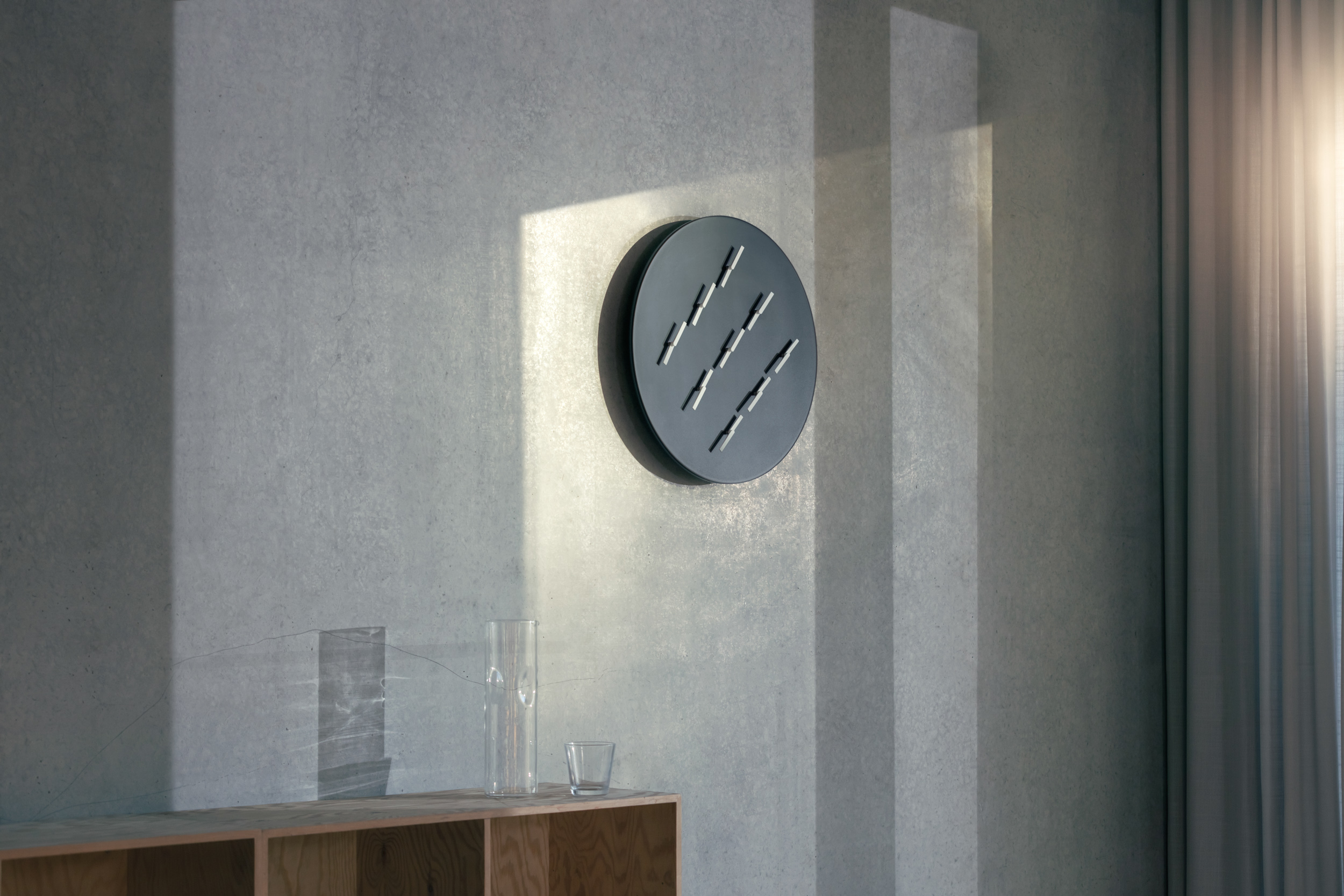
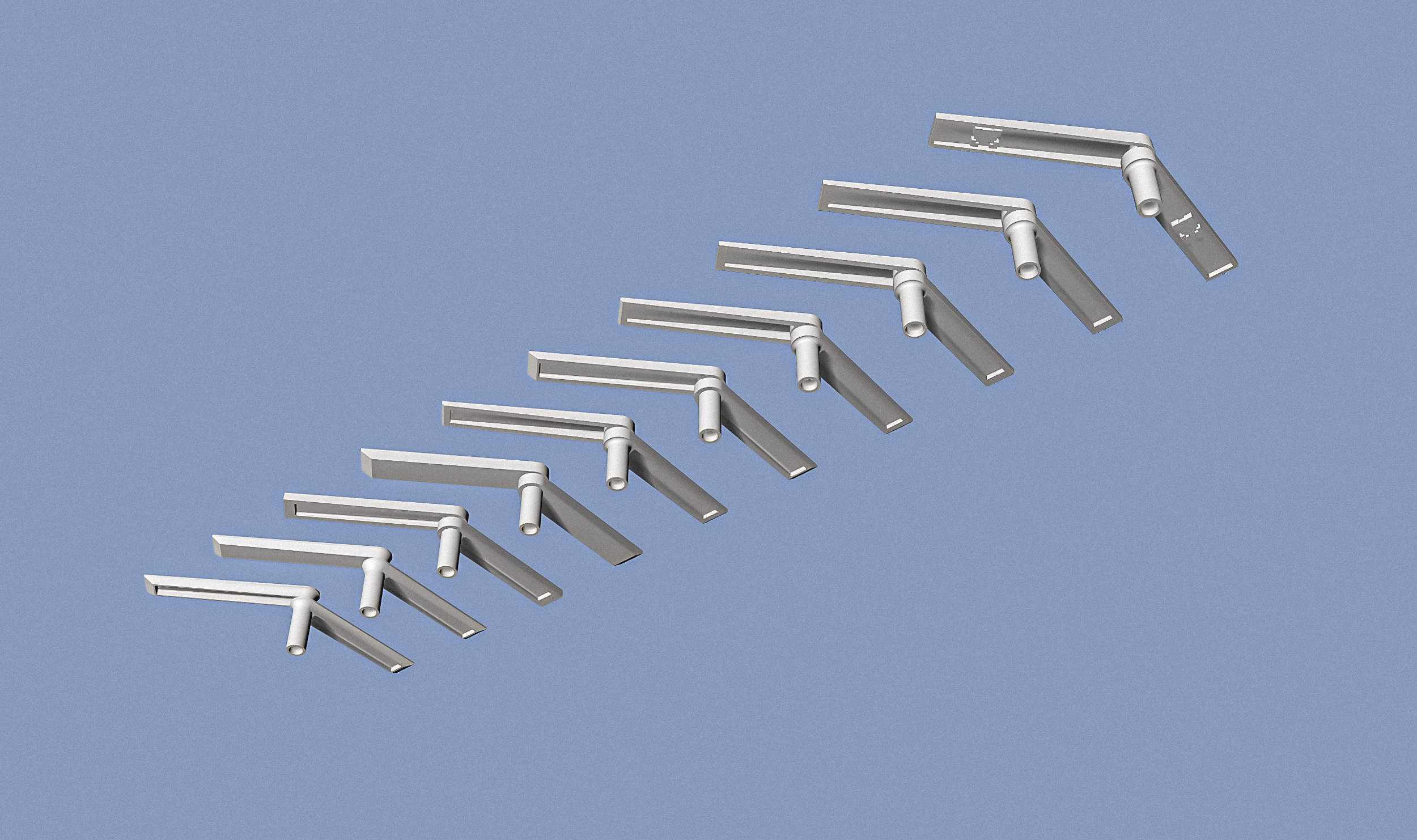
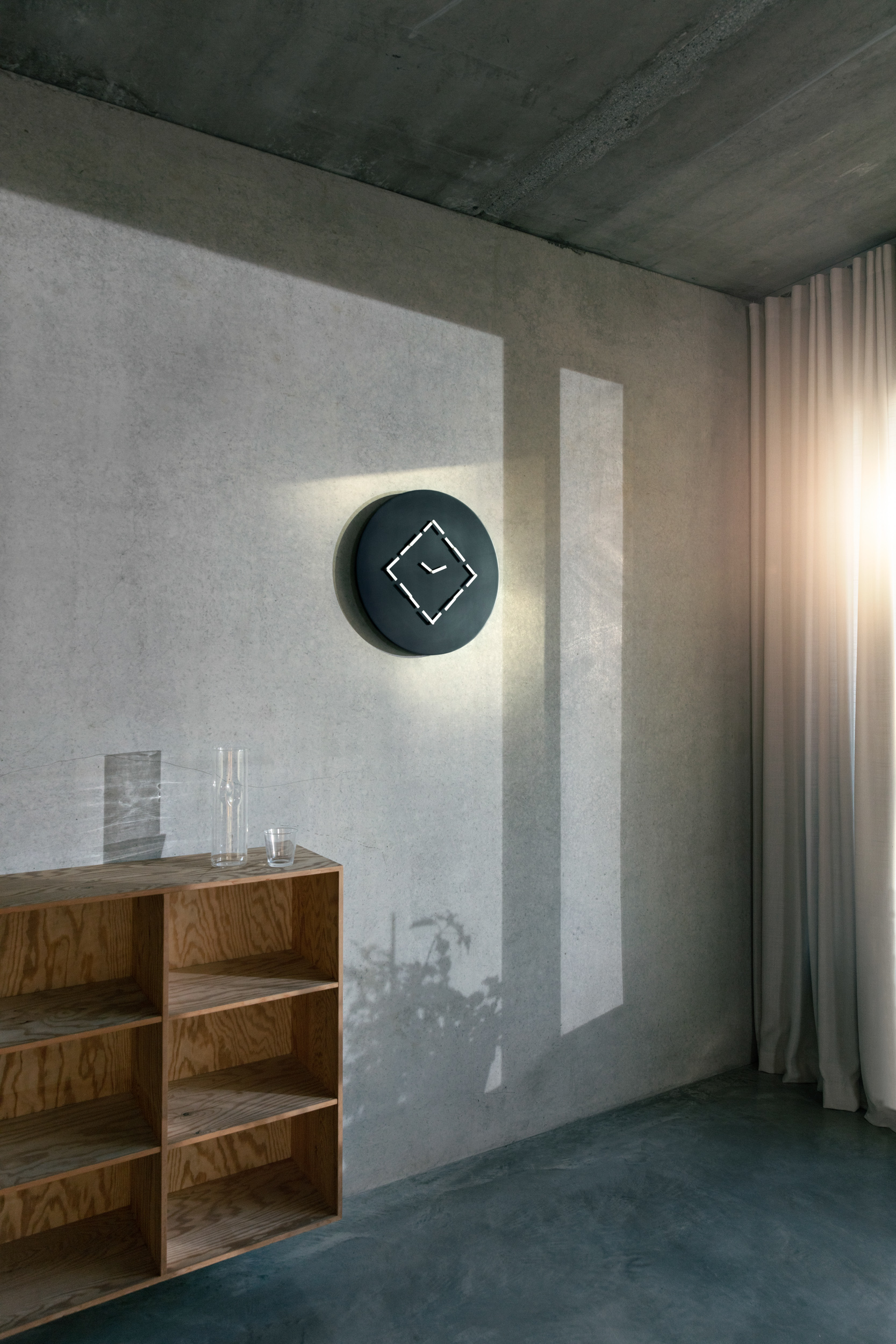
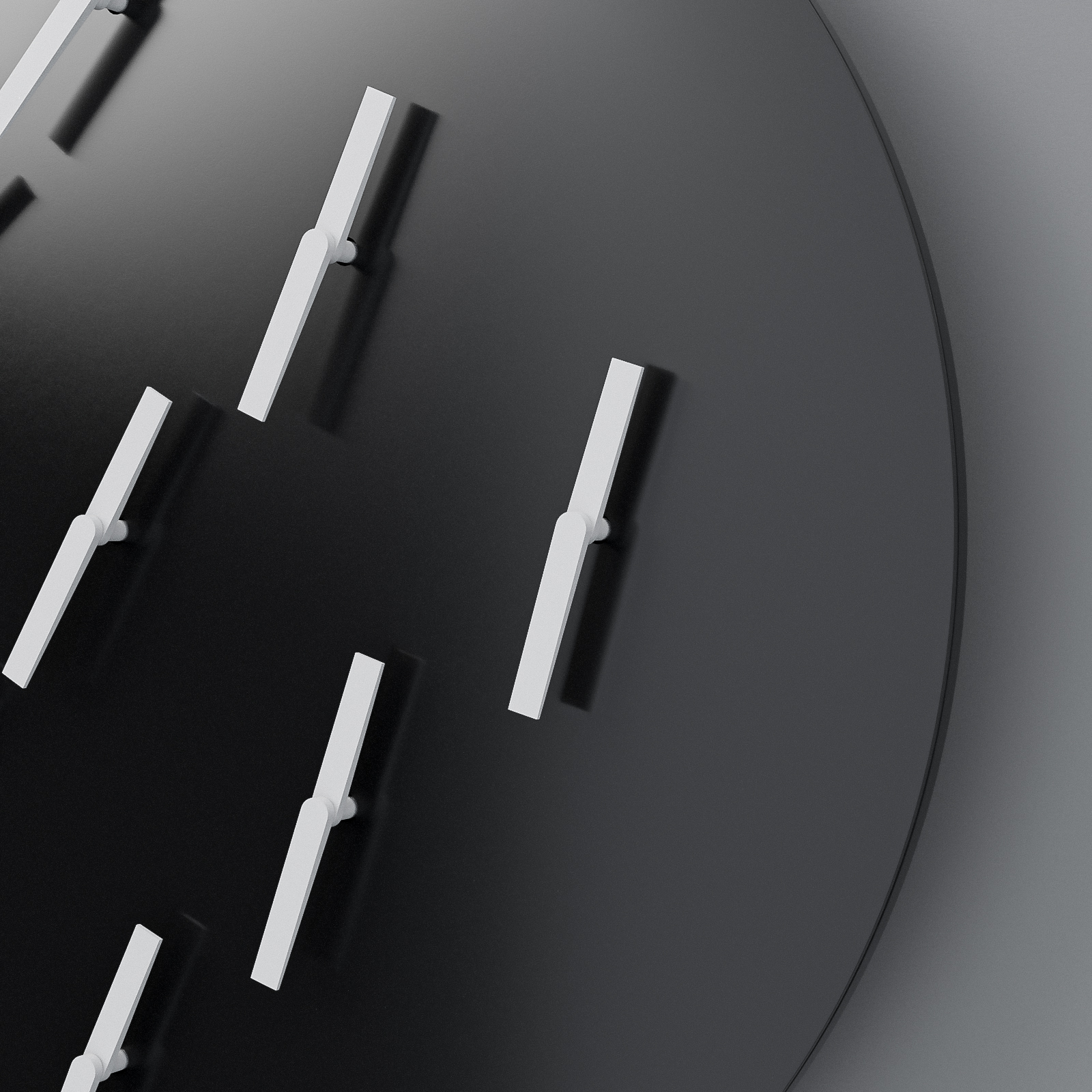
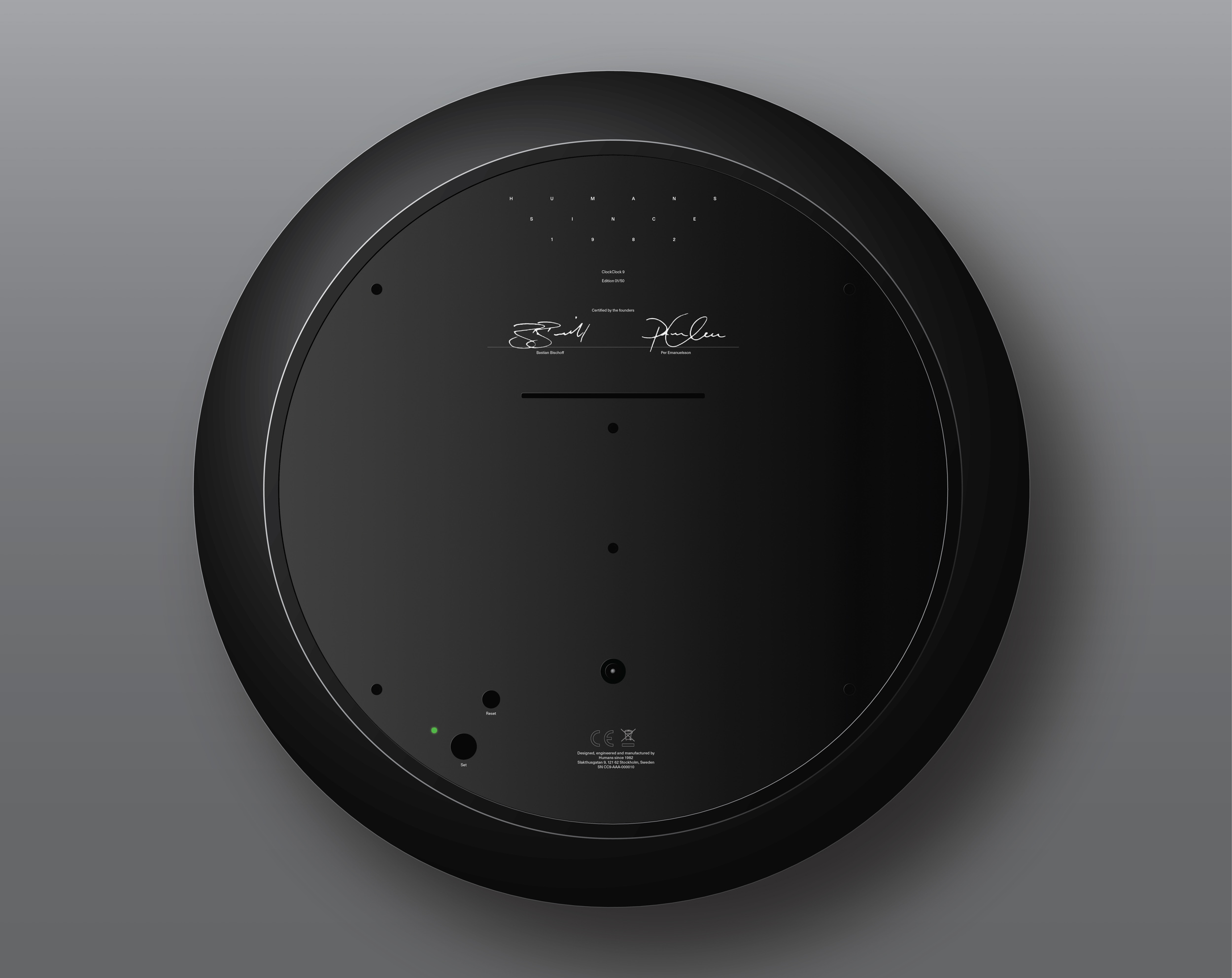

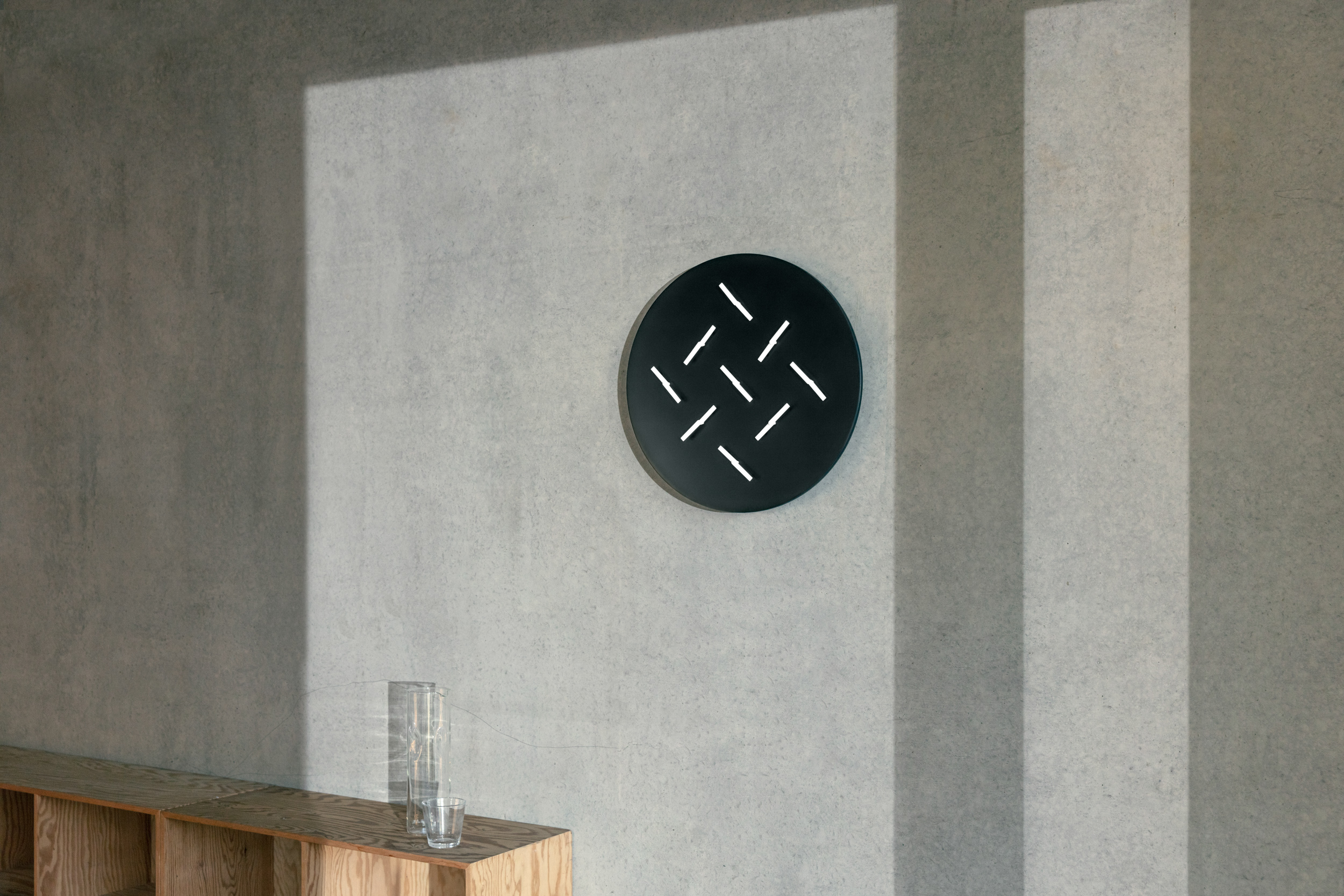
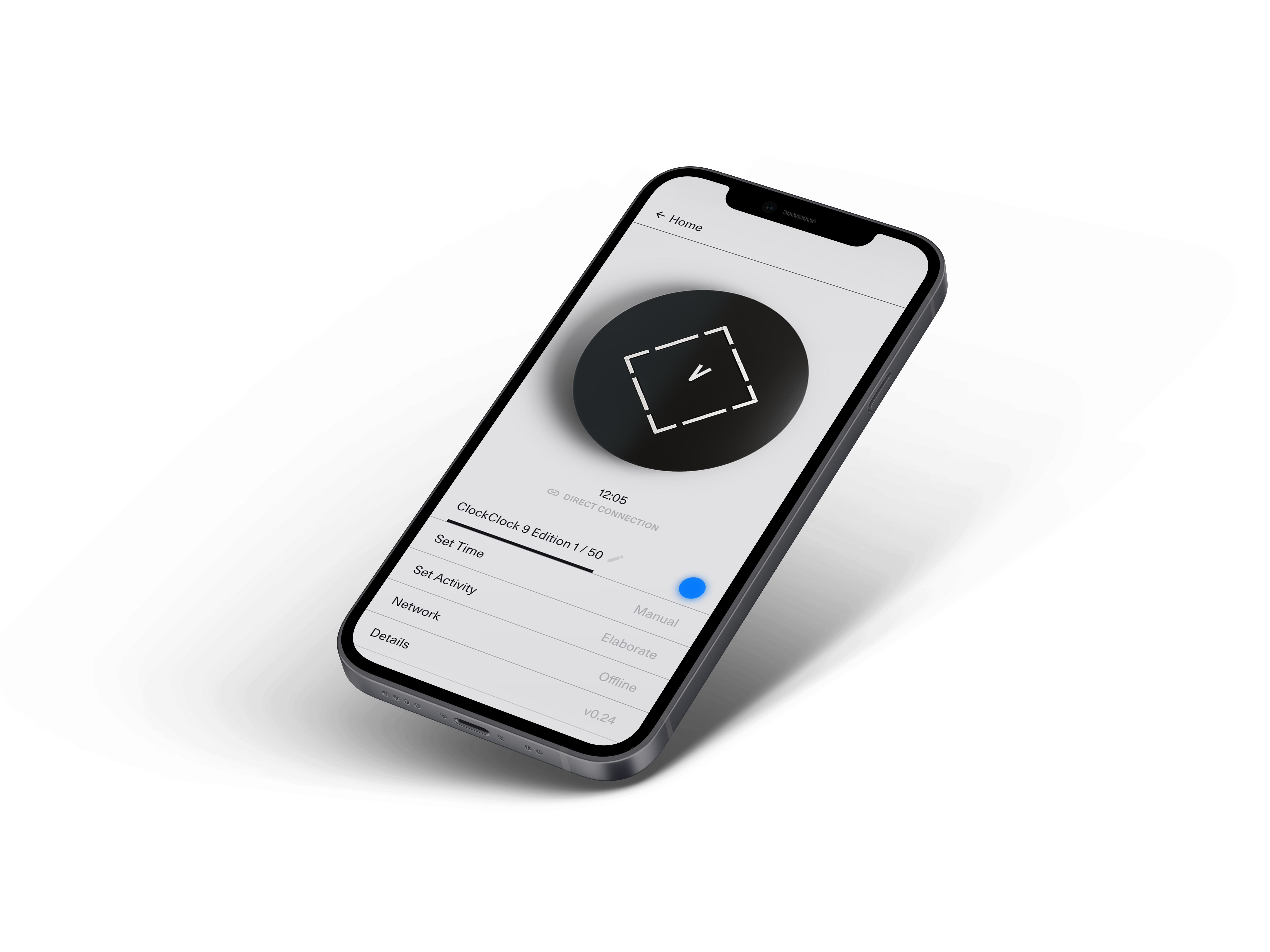

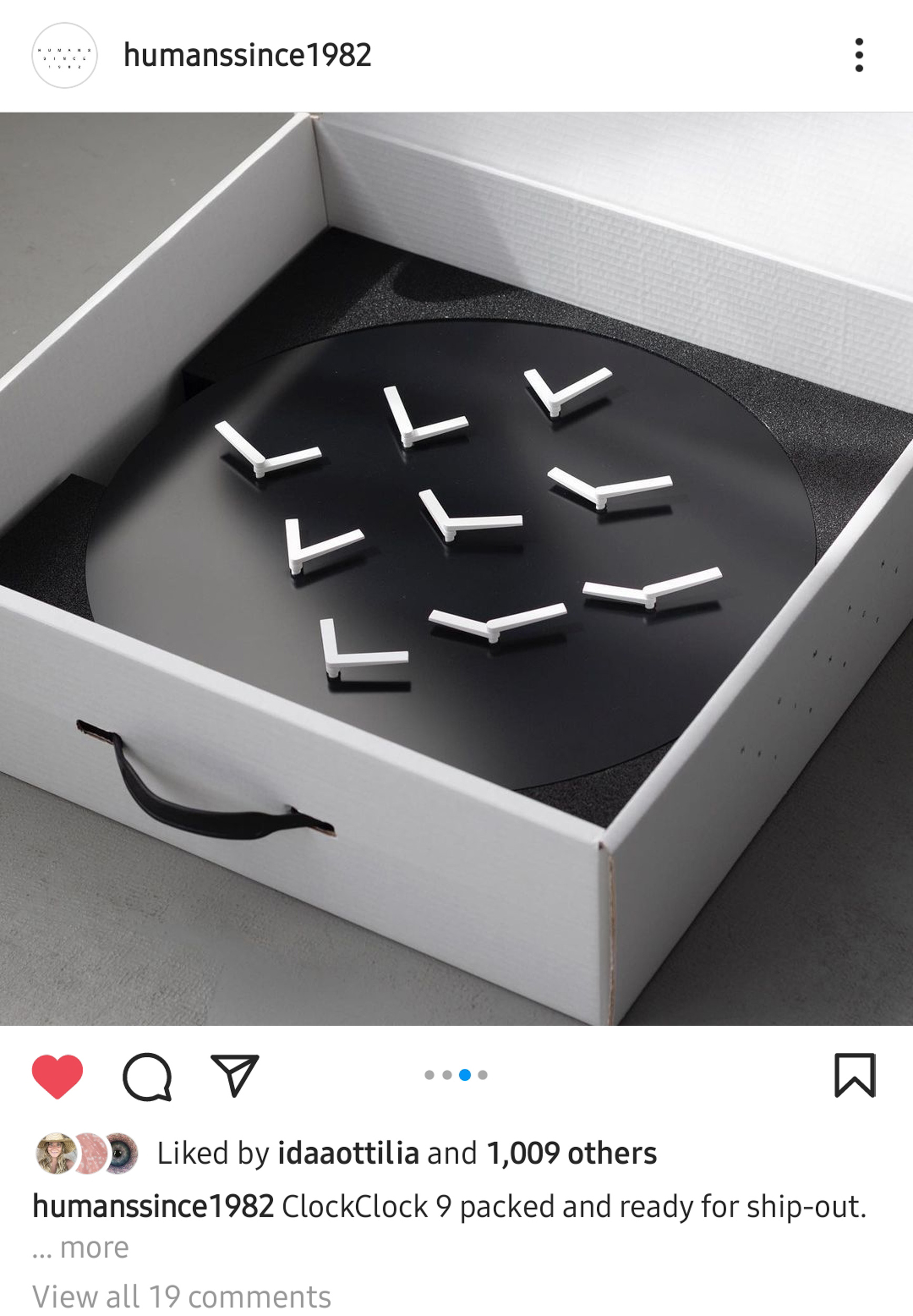
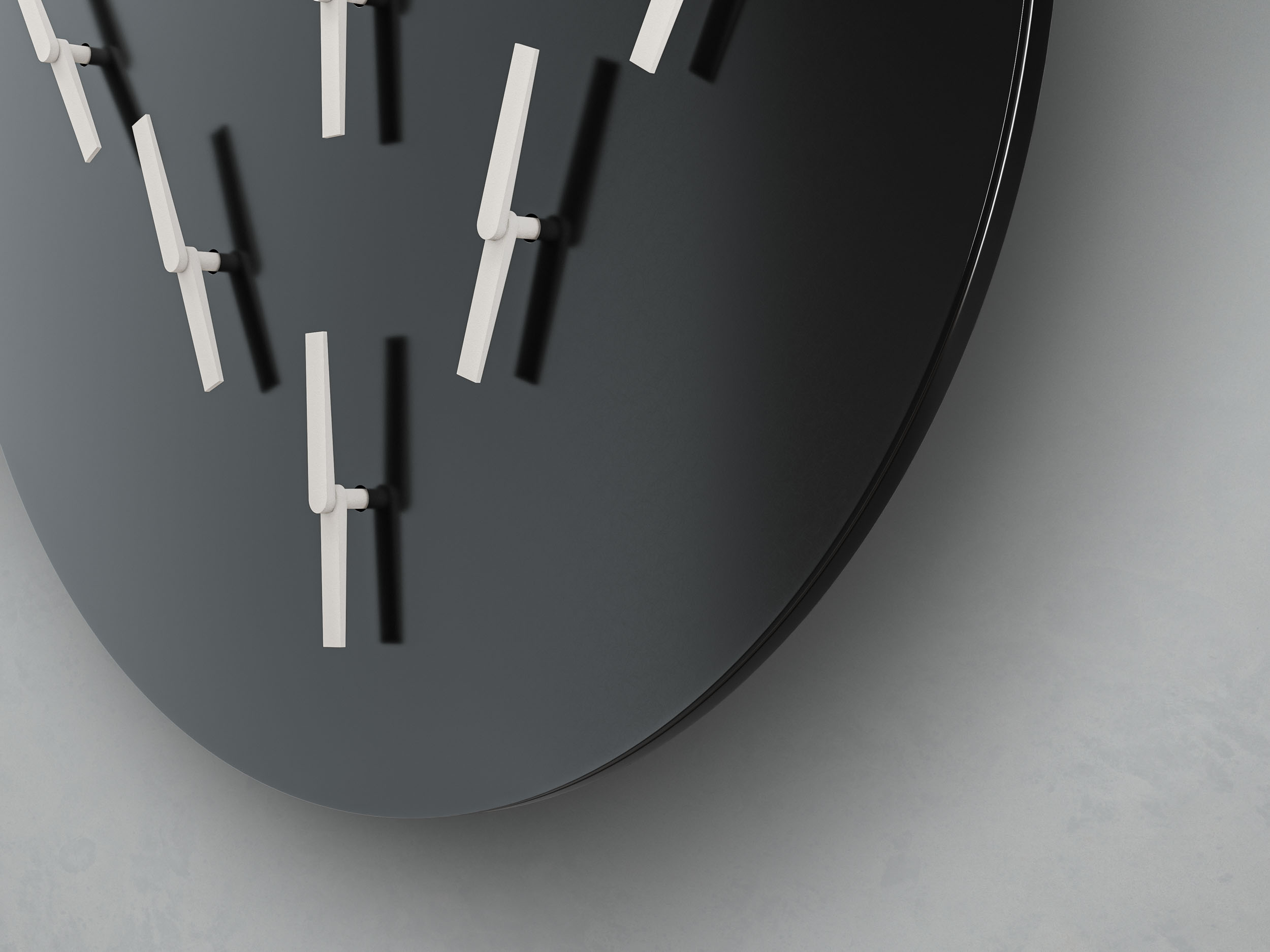

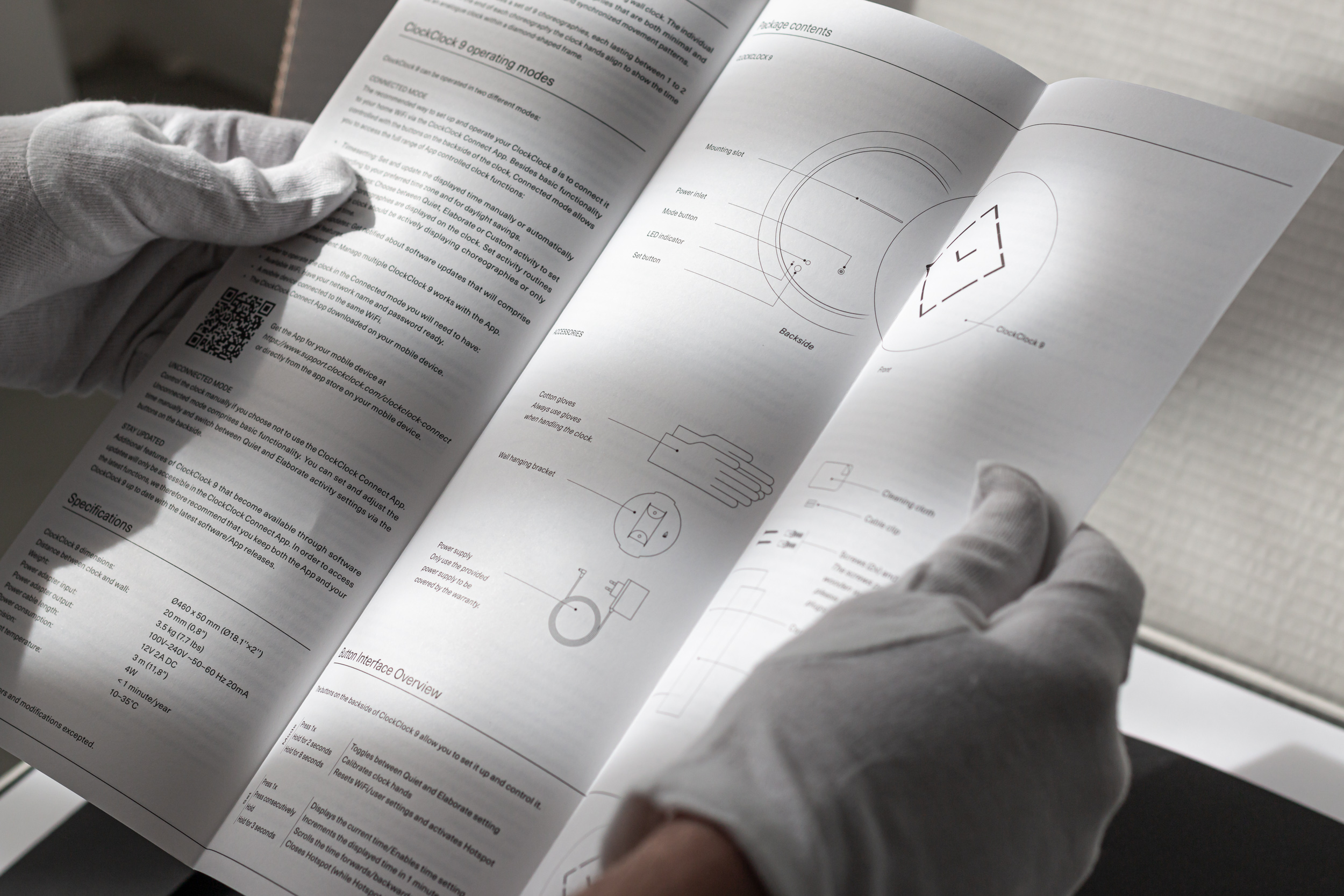
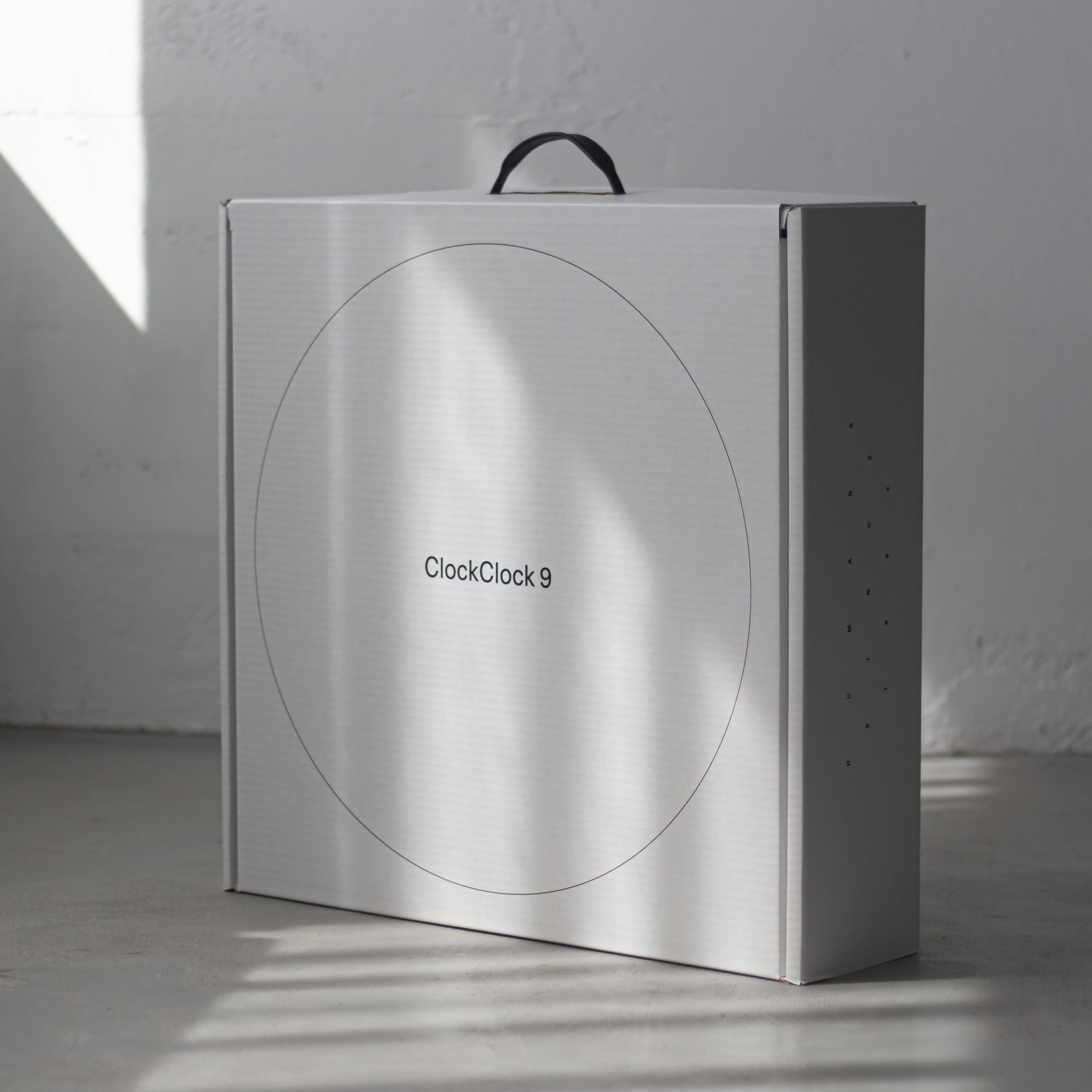

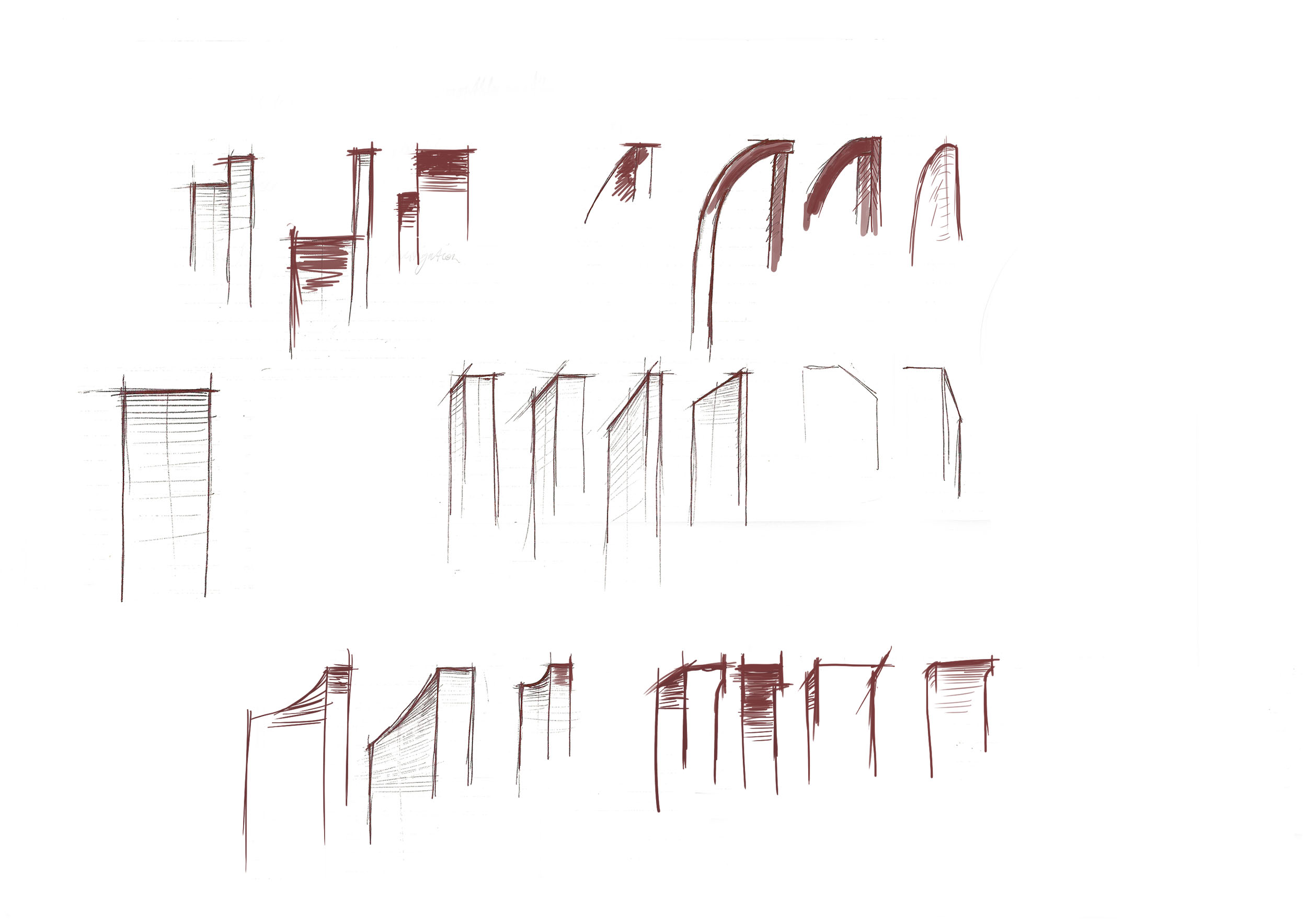
Rocking Church
Commercial
Humans since 1982
Role
Designer (in-house)
Responsibility
Concept development, Design, Prototyping, Art production,
Art direction for photo and video documentaion.
Contribution
Sensor based software development.
Details
Black coated plywood, Aluminium, Electronic components, Loudspeaker.
3250 x 1170 x 3050mm
More about Rocking Church on
humanssince1982.com
The kinetic artwork Rocking Church is a 3-metre-high true-to-scale
replica of the Ulm Minster, which is mounted on two rockers. An electro-mechanical mechanism hidden inside the church, controlle by sensors, allows the church to rock at its own volition through a weight set in motion, accompanied by the sound of a ringing church bell.
Despite its strong visual language, interpretation of the work remains open. Instead, Rocking Church uncannily and naively, reflects current societal insecurities and serves as departure point for conversation and various contextualisations.
One of which took place in form of two public performances together with dancers choreographed by one of Sweden’s best-known choreographers, Cristina Caprioli and her work pending sky.
Photos: Tim Meier
replica of the Ulm Minster, which is mounted on two rockers. An electro-mechanical mechanism hidden inside the church, controlle by sensors, allows the church to rock at its own volition through a weight set in motion, accompanied by the sound of a ringing church bell.
Despite its strong visual language, interpretation of the work remains open. Instead, Rocking Church uncannily and naively, reflects current societal insecurities and serves as departure point for conversation and various contextualisations.
One of which took place in form of two public performances together with dancers choreographed by one of Sweden’s best-known choreographers, Cristina Caprioli and her work pending sky.
Photos: Tim Meier
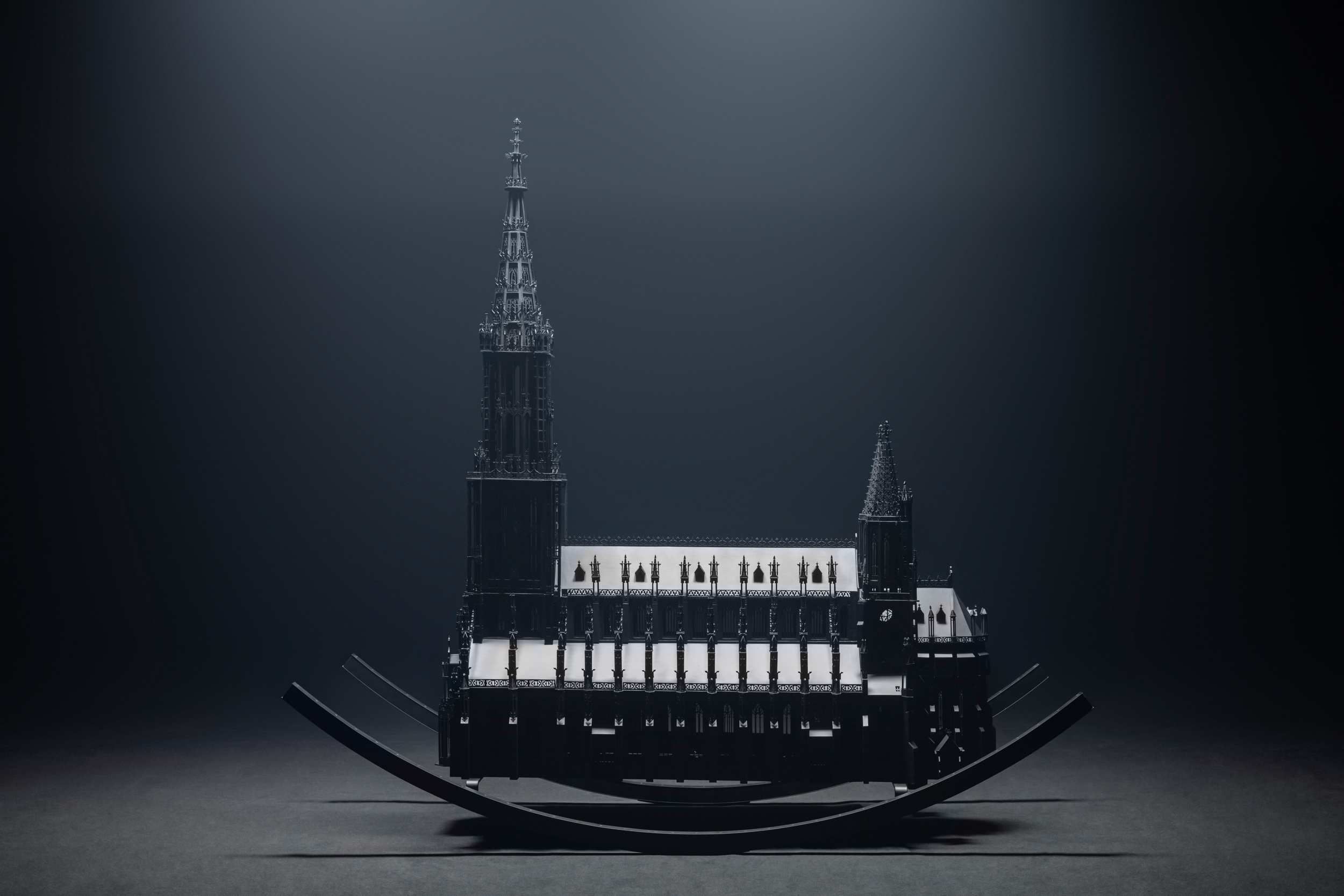

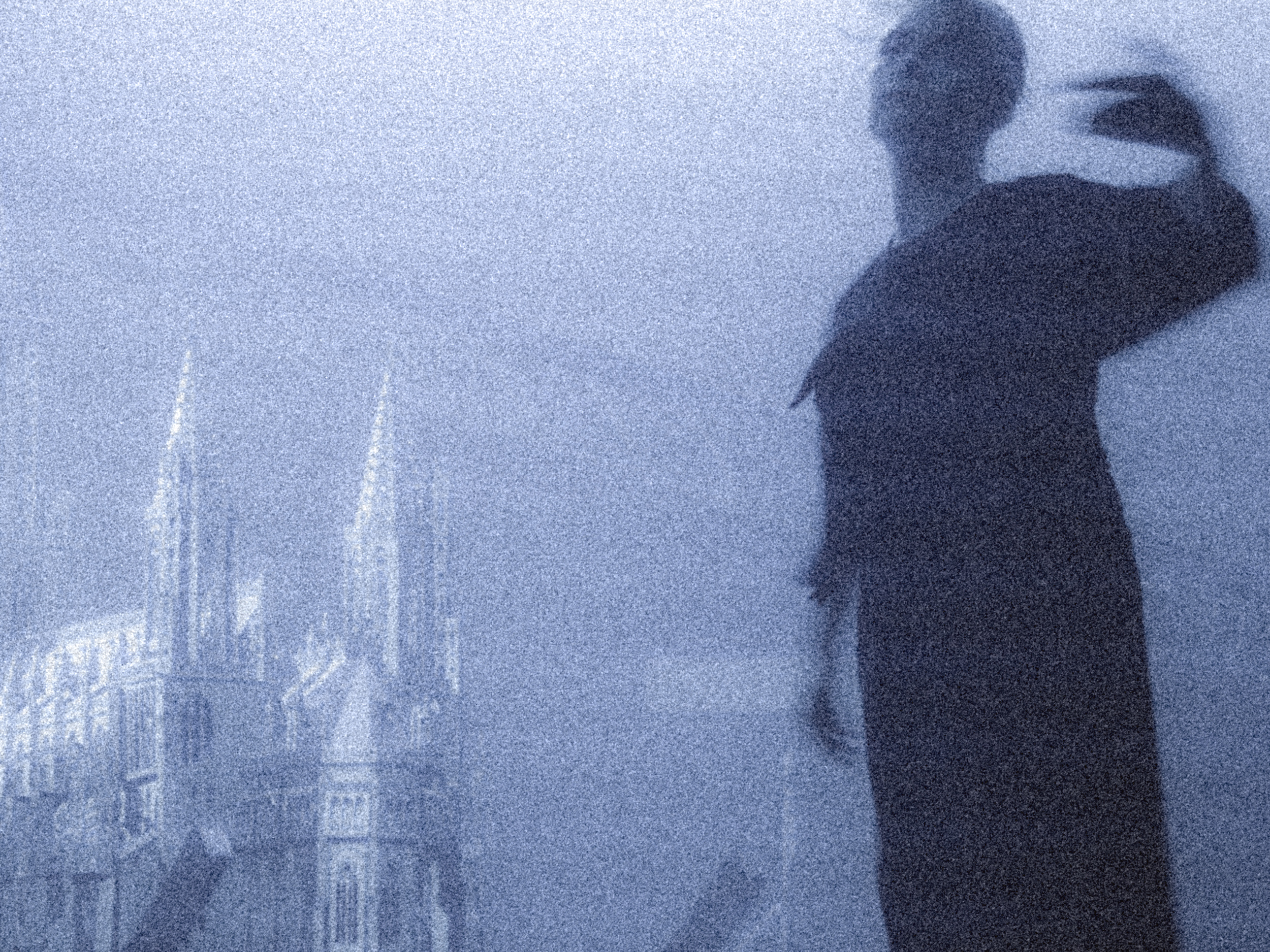
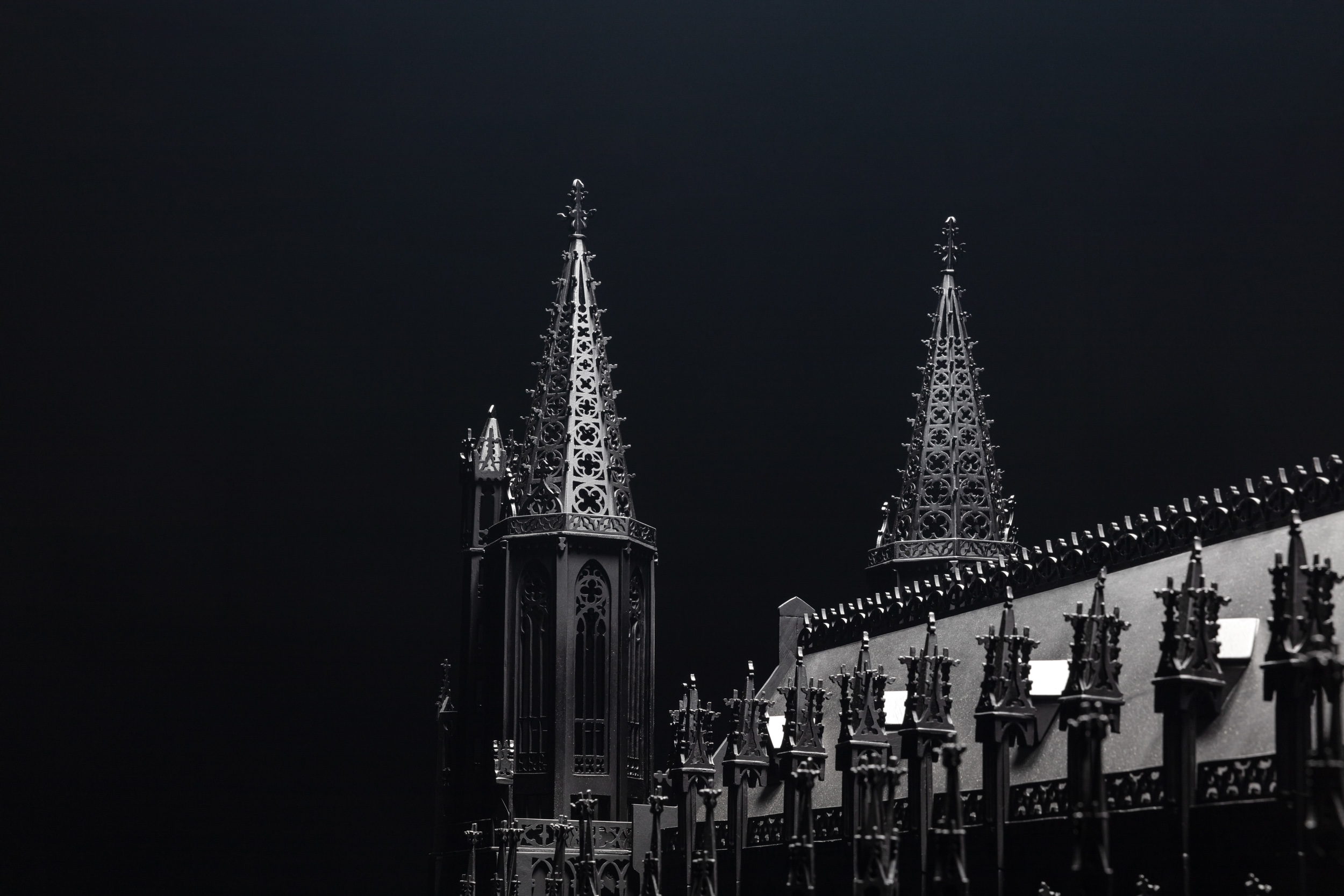
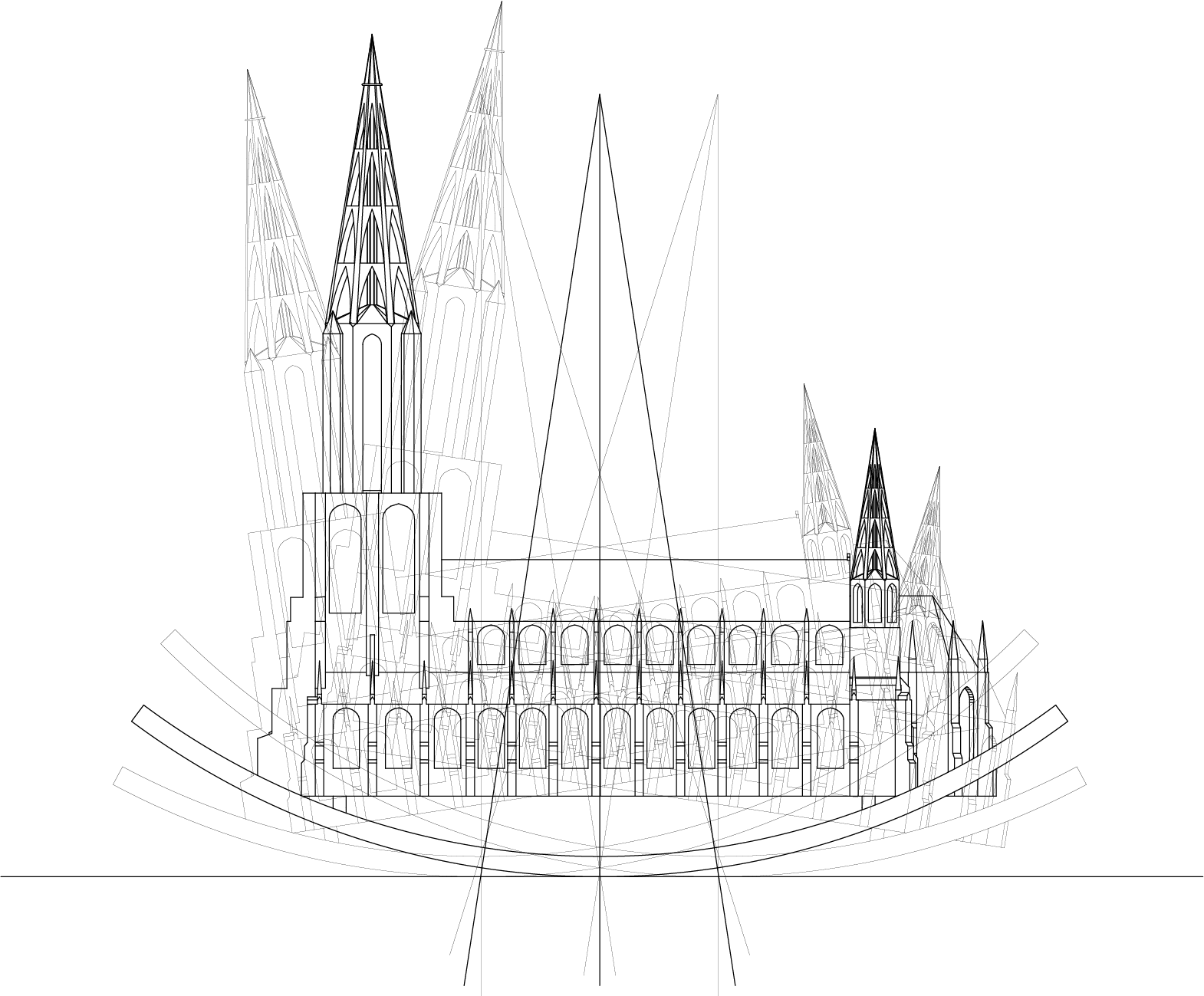
Collection of Drones
Commercial
Humans since 1982 for IKEA
Role
Designer (in-house)
Responsibility
Project management and external communications, Concept development, Product design, Drone design, Prototyping, Visualisation.
Contribution
Product development, Quality control.
Details
Powder coated aluminium, Metal pins, Glas, Black drones of injection moulded ABS.
500(350) x 500(260) x 75mm
More about the Drone Wall Decorations on
about.ikea.com
In a partnership with IKEA two limited edition artworks as part of the IKEA Art Event 2021 were developed and realised.
The drone wall pieces resemble insect collection cabinets. Deliberately presenting non functional drones as static objects addresses the uncertainty of our future, which the drones embody, as technology permeates all aspects of our lives.
The act of collecting, analysing and observing new technology through a quasi-scientific process is an attempt to assert control over it and give back a human connotation to it – preserving and archiving it for an imagined future audience.
The artwork is intended to stimulate conversation and thought about how, why and what we want to preserve for future generations. It is about how current technology might be perceived in the future as we move on to the next chapter of our natural and technological history.
Photos: Ikea, Heinrich Ehnert
The drone wall pieces resemble insect collection cabinets. Deliberately presenting non functional drones as static objects addresses the uncertainty of our future, which the drones embody, as technology permeates all aspects of our lives.
The act of collecting, analysing and observing new technology through a quasi-scientific process is an attempt to assert control over it and give back a human connotation to it – preserving and archiving it for an imagined future audience.
The artwork is intended to stimulate conversation and thought about how, why and what we want to preserve for future generations. It is about how current technology might be perceived in the future as we move on to the next chapter of our natural and technological history.
Photos: Ikea, Heinrich Ehnert
